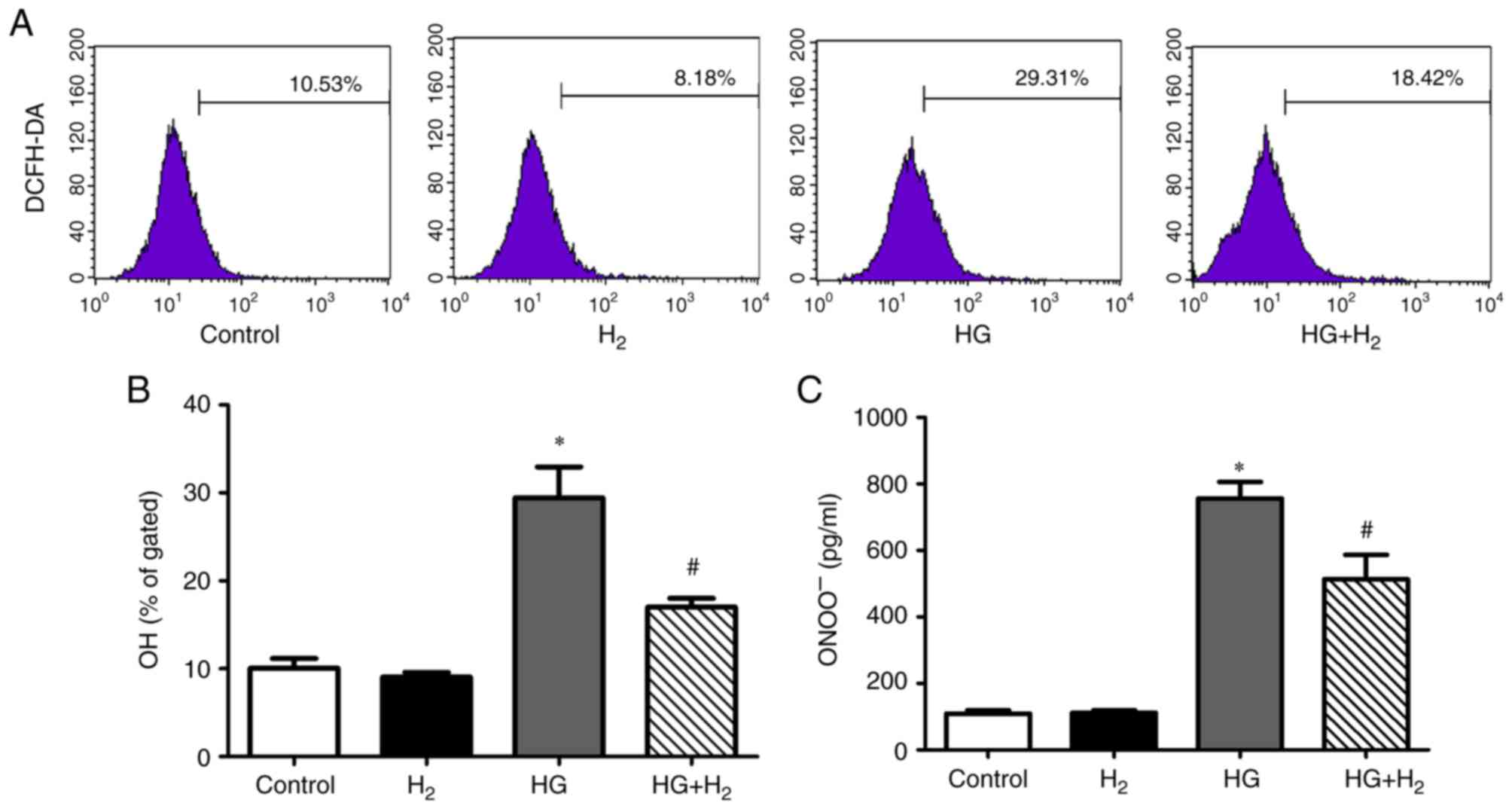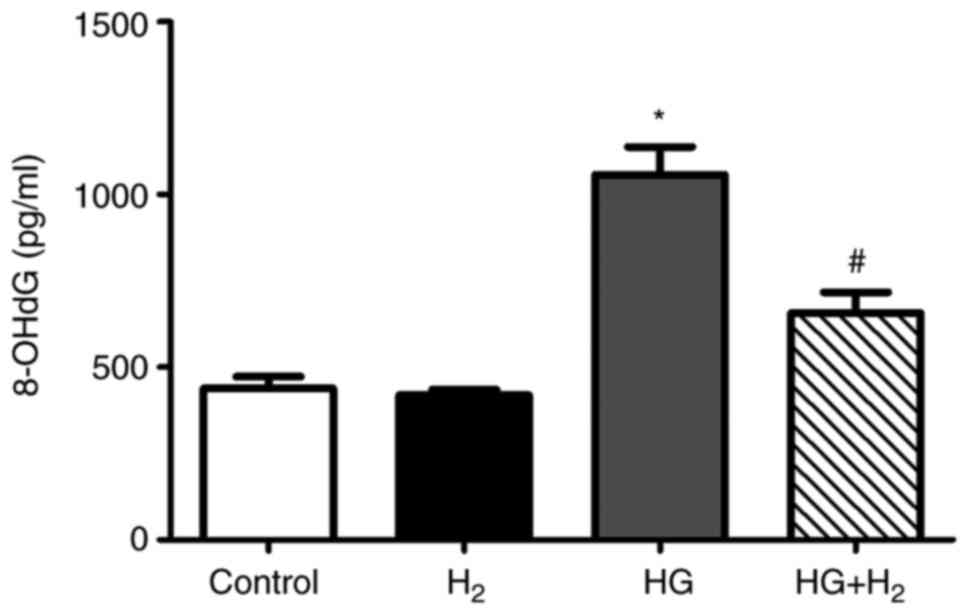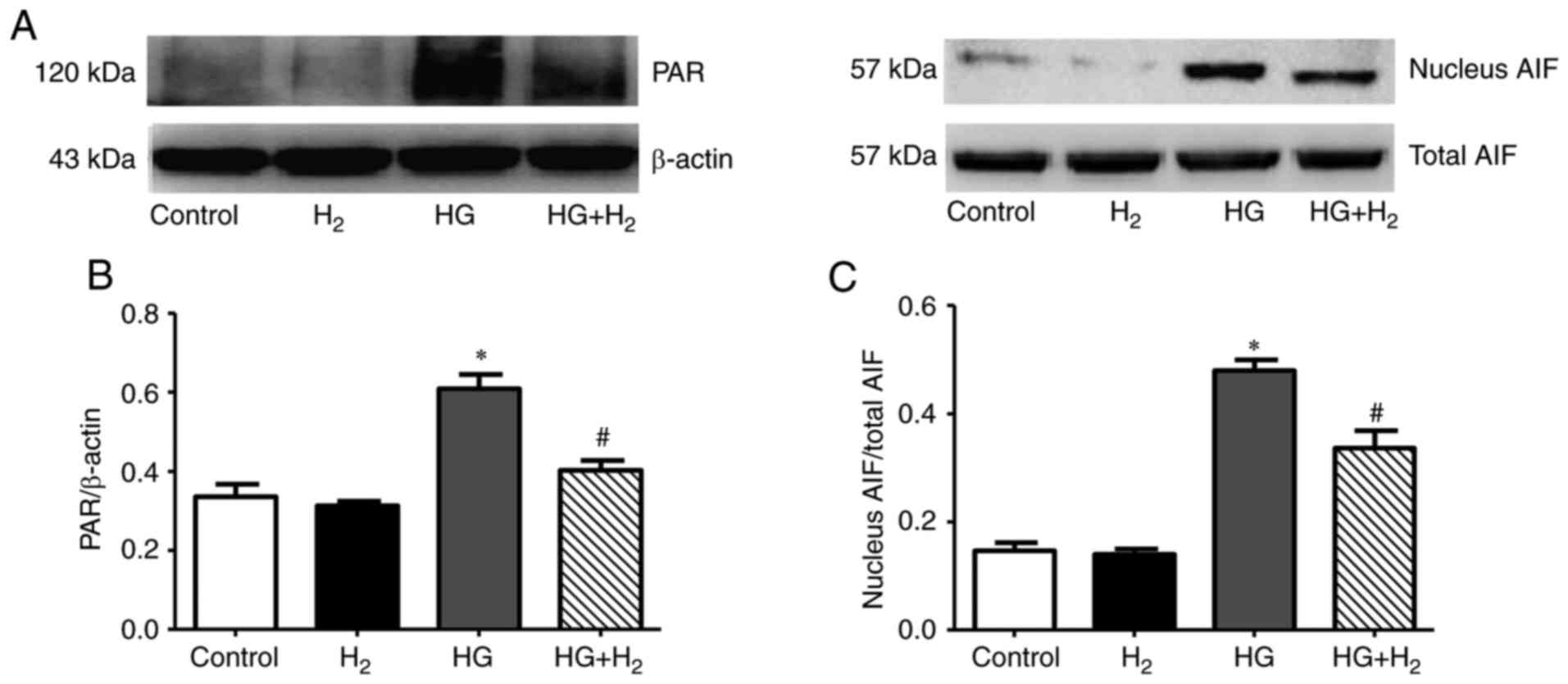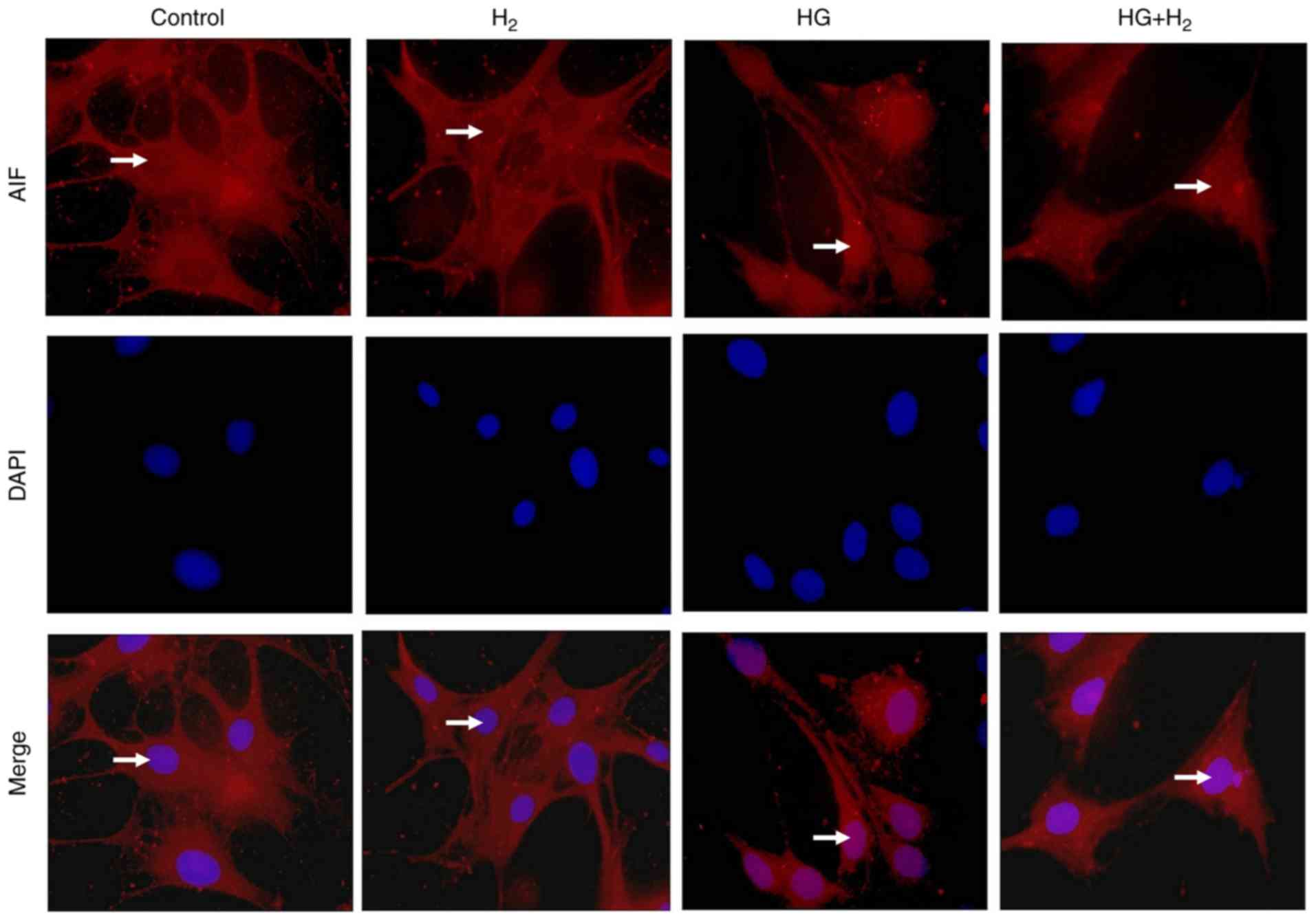|
1
|
Hu C and Jia W: Diabetes in China:
Epidemiology and genetic risk factors and their clinical utility in
personalized medication. Diabetes. 67:3–11. 2018. View Article : Google Scholar : PubMed/NCBI
|
|
2
|
Alam U, Riley DR, Jugdey RS, Azmi S,
Rajbhandari S, D'Août K and Malik RA: Diabetic neuropathy and gait:
A review. Diabetes Ther. 8:1253–1264. 2017. View Article : Google Scholar : PubMed/NCBI
|
|
3
|
Vinik AI, Camacho P, Reddy S, Valencia WM,
Trence D, Matsumoto AM and Morley JE: Aging, diabetes, and falls.
Endocr Pract. 23:1117–1139. 2017. View Article : Google Scholar : PubMed/NCBI
|
|
4
|
Kobayashi M and Zochodne DW: Diabetic
neuropathy and the sensory neuron: New aspects of pathogenesis and
their treatment implications. J Diabetes Investig. 2018. View Article : Google Scholar
|
|
5
|
Brownlee M: The pathobiology of diabetic
complications, A unifying mechanism. Diabetes. 54:1615–1625. 2005.
View Article : Google Scholar : PubMed/NCBI
|
|
6
|
Sun LQ, Zhao J, Zhang TT, Qu L, Wang X,
Xue B, Li XJ, Mu YM and Lu JM: Protective effects of Salvianolic
acid B on Schwann cells apoptosis induced by high glucose.
Neurochem Res. 37:996–1010. 2012. View Article : Google Scholar : PubMed/NCBI
|
|
7
|
Sifuentes-Franco S, Pacheco-Moisés FP,
Rodriguez-Carrizalez AD and Miranda-Diaz AG: The role of oxidative
stress, mitochondrial function, and autophagy in diabetic
polyneuropathy. J Diabetes Res. 2017:16730812017. View Article : Google Scholar : PubMed/NCBI
|
|
8
|
Fatokun AA, Dawson VL and Dawson TM:
Parthanatos: Mitochondrial-linked mechanisms and therapeutic
opportunities. Br J Pharmacol. 171:2000–2016. 2014. View Article : Google Scholar : PubMed/NCBI
|
|
9
|
Cheng SY, Wang SC, Lei M, Wang Z and Xiong
K: Regulatory role of calpain in neuronal death. Neural Regen Res.
13:556–562. 2018. View Article : Google Scholar : PubMed/NCBI
|
|
10
|
Huang CT, Huang DY, Hu CJ, Wu D and Lin
WW: Energy adaptive response during parthanatos is enhanced by
PD98059 and involves mitochondrial function but not autophagy
induction. Biochim Biophys Acta. 1843:531–543. 2014. View Article : Google Scholar : PubMed/NCBI
|
|
11
|
Yu Y, Ma X, Yang T, Li B, Xie K, Liu D,
Wang G and Yu Y: Protective effect of hydrogen-rich medium against
high glucose-induced apoptosis of Schwann cells in vitro. Mol Med
Rep. 12:3986–3992. 2015. View Article : Google Scholar : PubMed/NCBI
|
|
12
|
Bárány T, Simon A, Szabó G, Benkő R, Mezei
Z, Molnár L, Becker D, Merkely B, Zima E and Horváth EM: Oxidative
stress-related parthanatos of circulating mononuclear leukocytes in
heart failure. Oxid Med Cell Longev. 2017:12496142017. View Article : Google Scholar : PubMed/NCBI
|
|
13
|
Tajuddin N, Kim HY and Collins MA: PARP
inhibition prevents Ethanol-induced neuroinflammatory signaling and
neurodegeneration in rat adult-age brain slice cultures. J
Pharmacol Exp Ther. 365:117–126. 2018. View Article : Google Scholar : PubMed/NCBI
|
|
14
|
Zille M, Karuppagounder SS, Chen Y, Gough
PJ, Bertin J, Finger J, Milner TA, Jonas EA and Ratan RR: Neuronal
death after hemorrhagic stroke in vitro and in vivo shares features
of ferroptosis and necroptosis. Stroke. 48:1033–1043. 2017.
View Article : Google Scholar : PubMed/NCBI
|
|
15
|
Zhao H, Ning J, Lemaire A, Koumpa FS, Sun
JJ, Fung A, Gu J, Yi B, Lu K and Ma D: Necroptosis and parthanatos
are involved in remote lung injury after receiving ischemic renal
allografts in rats. Kidney Int. 87:738–748. 2015. View Article : Google Scholar : PubMed/NCBI
|
|
16
|
Shimada S, Wakayama K, Fukai M, Shimamura
T, Ishikawa T, Fukumori D, Shibata M, Yamashita K, Kimura T, Todo
S, et al: Hydrogen gas ameliorates hepatic reperfusion injury after
prolonged cold preservation in isolated perfused rat liver. Artif
Organs. 40:1128–1136. 2016. View Article : Google Scholar : PubMed/NCBI
|
|
17
|
Yu Y, Yang Y, Bian Y, Li Y, Liu L, Zhang
H, Xie K, Wang G and Yu Y: Hydrogen gas protects against intestinal
injury in wild type but not NRF2 knockout mice with severe sepsis
by regulating HO-1 and HMGB1 release. Shock. 48:364–370. 2017.
View Article : Google Scholar : PubMed/NCBI
|
|
18
|
Xie K, Liu L, Yu Y and Wang G: Hydrogen
gas presents a promising therapeutic strategy for sepsis. Biomed
Res Int. 2014:8076352014. View Article : Google Scholar : PubMed/NCBI
|
|
19
|
Chen Y, Chen H, Xie K, Liu L, Li Y, Yu Y
and Wang G: H2 treatment attenuated pain behavior and cytokine
release through the HO-1/CO pathway in a rat model of neuropathic
pain. Inflammation. 38:1835–1846. 2015. View Article : Google Scholar : PubMed/NCBI
|
|
20
|
Li J, Dong Y, Chen H, Han H, Yu Y, Wang G,
Zeng Y and Xie K: Protective effects of hydrogen-rich saline in a
rat model of permanent focal cerebral ischemia via reducing
oxidative stress and inflammatory cytokines. Brain Res.
1486:103–111. 2012. View Article : Google Scholar : PubMed/NCBI
|
|
21
|
Yang T, Wang L, Sun R, Chen H, Zhang H, Yu
Y, Wang Y, Wang G, Yu Y and Xie K: Hydrogen-rich medium ameliorates
lipopolysaccharide-induced barrier dysfunction via Rhoa-Mdia1
signaling in Caco-2 cells. Shock. 45:228–237. 2016. View Article : Google Scholar : PubMed/NCBI
|
|
22
|
Hong Y, Sun LI, Sun R, Chen H, Yu Y and
Xie K: Combination therapy of molecular hydrogen and hyperoxia
improves survival rate and organ damage in a zymosan-induced
generalized inflammation model. Exp Ther Med. 11:2590–2596. 2016.
View Article : Google Scholar : PubMed/NCBI
|
|
23
|
Xue B, Wang L, Zhang Z, Wang R, Xia XX,
Han PP, Cao LJ, Liu YH and Sun LQ: Puerarin may protect against
Schwann cell damage induced by glucose fluctuation. J Nat Med.
71:472–481. 2017. View Article : Google Scholar : PubMed/NCBI
|
|
24
|
Ko PY, Yang CC, Kuo YL, Su FC, Hsu TI, Tu
YK and Jou IM: Schwann-cell autophagy, functional recovery, and
scar reduction after peripheral nerve repair. J Mol Neurosci.
64:601–610. 2018. View Article : Google Scholar : PubMed/NCBI
|
|
25
|
Rachana KS, Manu MS and Advirao GM:
Insulin-induced upregulation of lipoprotein lipase in Schwann cells
during diabetic peripheral neuropathy. Diabetes Metab Syndr.
12:525–530. 2018. View Article : Google Scholar : PubMed/NCBI
|
|
26
|
Yao W, Yang X, Zhu J, Gao B, Liu R and Xu
L: Tang-Luo-Ning, a traditional Chinese medicine, inhibits
endoplasmic reticulum stress-induced apoptosis of Schwann cells
under high glucose environment. Evid Based Complement Alternat Med.
2017:51935482017. View Article : Google Scholar : PubMed/NCBI
|
|
27
|
Scott TL, Rangaswamy S, Wicker CA and
Izumi T: Repair of oxidative DNA damage and cancer: Recent progress
in DNA base excision repair. Antioxid Redox Signal. 20:708–726.
2014. View Article : Google Scholar : PubMed/NCBI
|
|
28
|
Román-Pintos LM, Villegas-Rivera G,
Rodríguez-Carrizalez AD, Miranda-Díaz AG and Cardona-Muñoz EG:
Diabetic polyneuropathy in type 2 Diabetes mellitus: Inflammation,
oxidative stress, and mitochondrial function. J Diabetes Res.
2016:34256172016. View Article : Google Scholar : PubMed/NCBI
|
|
29
|
Li Y, Gorelik G, Strickland FM and
Richardson BC: Oxidative stress, T cell DNA methylation, and lupus.
Arthritis Rheumatol. 66:1574–1582. 2014. View Article : Google Scholar : PubMed/NCBI
|














